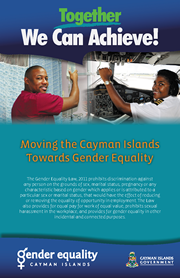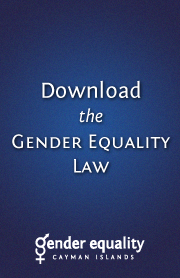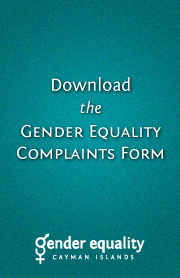The 2010 Census of Population and Housing found that there were 45,068 persons in the working age population (aged 15 years and older), of which 34,983 were employed. Overall, there were more employed males (17,839) than employed females (17,144) and this was also true among Non-Caymanians. However, among Caymanians there were more employed females than employed males.
Distribution of employed population by sex and status

The overall unemployment rate was higher among males (6.7%) than females (5.8%). This was also true for Caymanians, but among Non-Caymanians females had a higher unemployment rate. A higher percentage of females were not participating in the labour force across all categories. In the total population aged 15 years and older, 13.7% of males and 20.6% of females were not in the labour force.
Unemployed and not in the labour force

Persons 15 years and older are considered to be outside the labour force if they were without paid work and either not seeking or not available for paid work. This includes people who choose not to be employed (e.g. stay at home parents or homemakers) as well as those who are retired, in prison, disabled or in school. The unemployment rate represents the percentage of unemployed persons in the labour force.
These gaps in labour force participation are often the result of unequal responsibilities in the home and stereotyped feminine and masculine gender roles and responsibilities. Ideas about what type of activities are appropriate for males and females and prejudices can lead to discrimination against females, decreasing their participation in the paid economy.
Economics and Statistics Office
The mission of the Cayman Islands Economics and Statistics Office (ESO) is to assist people in making informed socio-economic analysis or decisions through the provision of statistical products and economic reports derived from various data compilation activities. The ESO collects, publishes and analyses a wide variety of data in addition to the censuses of population and housing, including labour force surveys and other reports relating to employment and the economy.
Global Employment Trends for Women 2012
In December 2012, the International Labour Organisation released its report on global employment trends for women, including gender gaps in unemployment, employment, labour force participation, vulnerability, and segregation in jobs and economic sectors. The report was produced in collaboration with UN Women and found that while there was some convergence in global labour markets in the earlier part of the past decade, gender gaps actually increased after the global financial crisis erupted in 2007, though there was considerable variation among regions. The reasons for these continued gaps are discussed and policies are also outlined to help reduce these gender gaps.
Progress in gender equality leads to economic growth
Improving equality between women and men is essential to the EU's response to the current economic crisis, according to the European Commission's latest annual report on gender equality. The report looks at progress over the past year in tackling the remaining gaps between women and men in employment, the economy and society in general. While some progress has been made in increasing the number of women in top jobs in business and in narrowing the gender pay gap, major challenges remain.
The XX Factor: What's Holding Women Back?
A task force of business, government and academic leaders set out to confront obstacles that keep women from participating fully in the United States economy. Here are their recommendations as published in the Wall Street Journal, including detailed "tool kits" for organisations and for society and the individual.
Gender equality lacking in global mobility opportunities
In this article, the Cayman Islands Journal explores one local accountant's opportunity to undertake an international assignment in the context of the global situation. To mark International Women's Day on 8th March 2016, PwC released its new thought leadership paper "Modern mobility: Moving women with purpose". Organisations across the world are using international mobility experiences to develop future leaders and advance the careers of key talent. Yet despite unprecedented demand and with more educated and career-ambitious women entering the workforce than ever before, women currently only account for 20% of international assignees. According to the paper, employers must address this inequity in order to attract, hire and retain female talent and promoting equality will require breaking down the barriers of gender stereotypes that continue to keep women out of the loop when it comes to global mobility opportunities.



